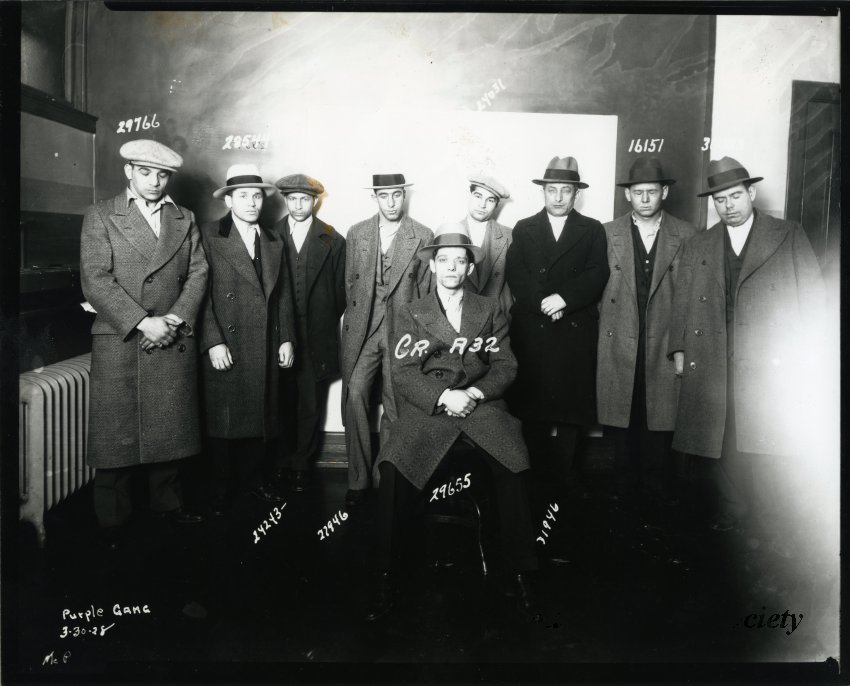The Purple Gang was Detroit’s most notorious organized crime gang in the 1920s and 1930s. Led chiefly by the Burnstein (often misspelled Bernstein) brothers Raymond, Joseph, Isadore and Abraham - the Purple Gang was made up of immigrants from Detroit’s lower east side. The area, known as “Little Jerusalem,” was bordered by Gratiot Avenue, Brush Street, Willis Avenue and Russell Street. Beginning as disruptive delinquents at Bishop School, and progressing to “students” of Detroit mobsters Charles Leiter and Henry Shorr, who ran the Oakland Sugar House, the group was first known as the Sugar House Boys or Sugar House Gang.
The origin of the name, Purple Gang (also known as “the Purples”), has many variations, among them: street vendors who were victims of the delinquents, referred to them as “tainted, off-color,” therefore purple, a “purple gang”; named for someone’s purple sweater at a meeting to change the name from Sugar House Boys; taken from the Purple Line Company, a taxi cab company who used gang members to win a trade war; others attribute it to the purple dye that was used to ruin clothes during the Cleaners & Dyers War.
The Gang, originally a loose confederation of independent criminals, began by hijacking alcohol smuggled by others across the Canadian border, chiefly the Detroit River, during prohibition. Al Capone, the notorious Chicago gangster, chose to use the Purple Gang to supply Old Log Cabin whiskey rather than battle them for Detroit territory. Allegedly, several Gang members were used as spotters in Chicago’s infamous St. Valentine’s Day Massacre.
In the 1920s, the Purple Gang was known for their instigation of the “Cleaners and Dyers War,” a dispute between the cleaning industry and its union. The Wholesale Cleaners and Dyers Association was formed by Abe Burnstein and the Detroit Federation of Labor. Membership was coerced by Purple Gang members, who often used violent means of persuasion. In 1928, 13 members of the Purple Gang were tried for extortion for their role in the war, but all were acquitted.
Around the time of the trial, the Purple Gang was in its heyday. It controlled all of Detroit’s underworld, including the gambling, liquor, and drug trade. The Purple Gang of the late 1920s was nearly invincible against law enforcement, since witnesses were too terrified to testify in murder and criminal trials.
Nonetheless, the Purple Gang began to dissolve in the early 1930s through inter-gang strife and warfare. In September 1931, the Purple Gang murdered three of its own members who were double crossing the Gang. The three men, Herman (Hymie) Paul, Isadore (Joe) Sutker, and Joe Lebowitz, were invited to a peace negotiation at the Collingwood Manor Apartment building in Detroit. When they arrived, they were shot. Sol Levine, the man who unwittingly transported the three men to their deaths, was later caught by Detroit Police and pressured into testifying against the Gang. As a result, three of the four men involved with the murders, including Ray Burnstein, were convicted of third-degree murder and sent to jail for life.
The “Collingwood Manor Massacre,” as the event came to be known, marked the downfall of the Purple Gang. By 1935, the alliance had splintered and the Purple Gang no longer reigned over Detroit’s underworld, with at least 18 members dead and others in prison.
